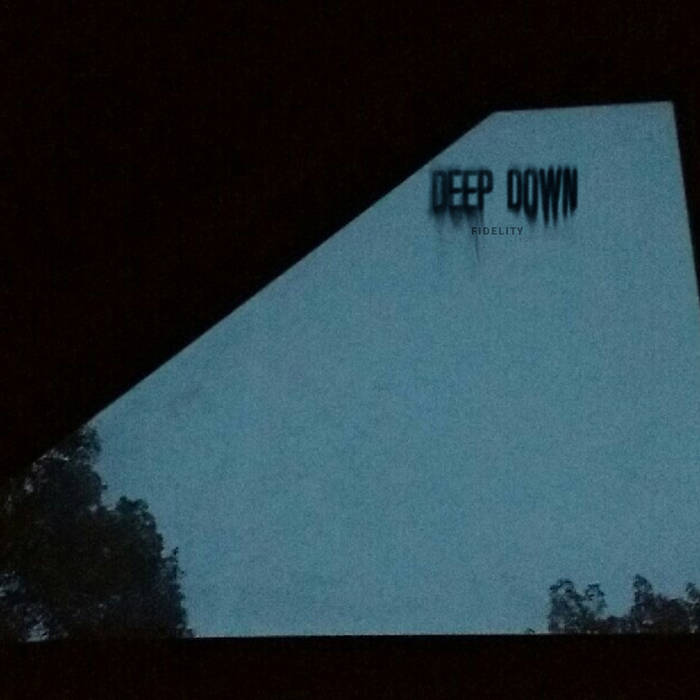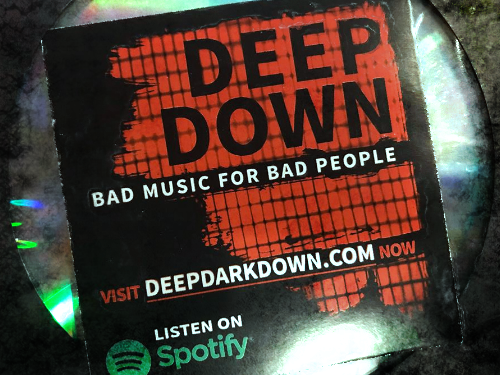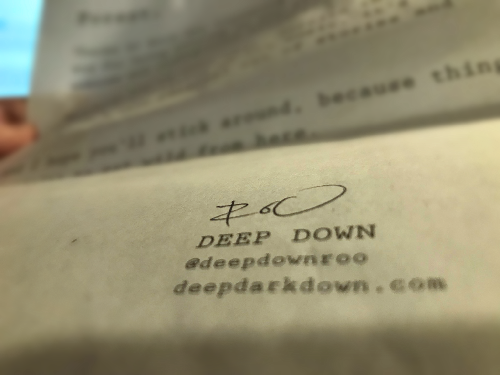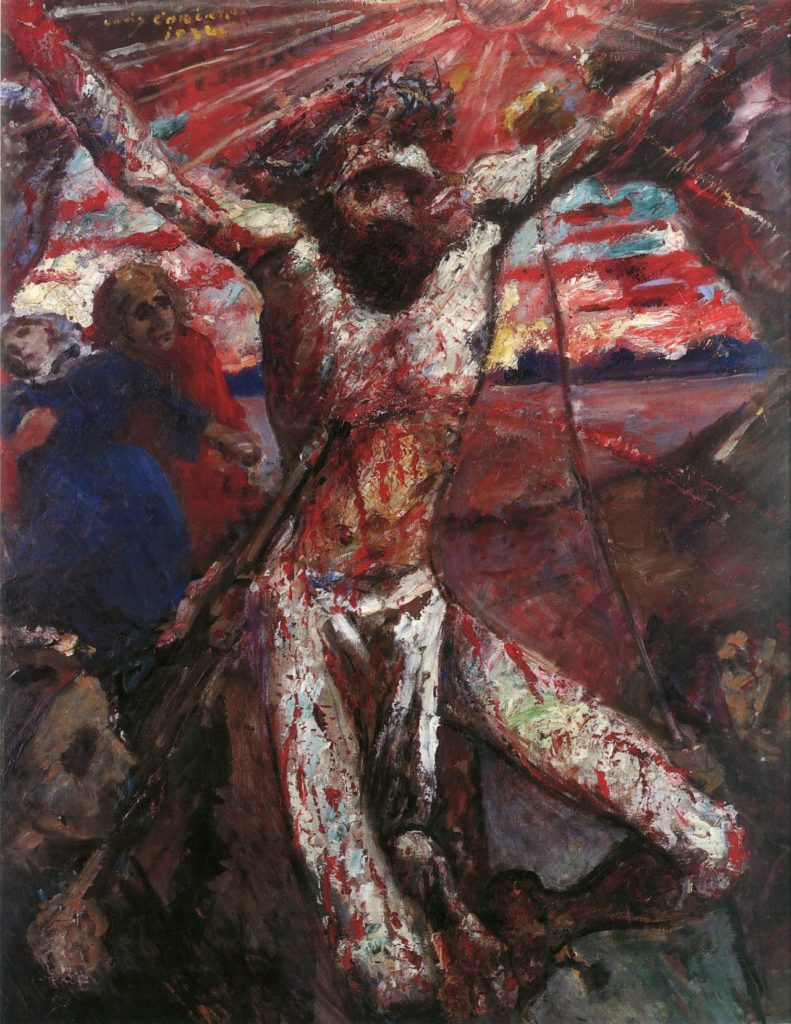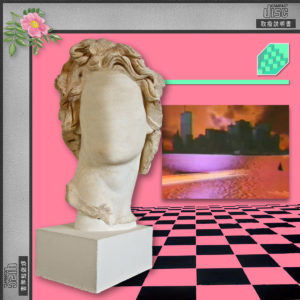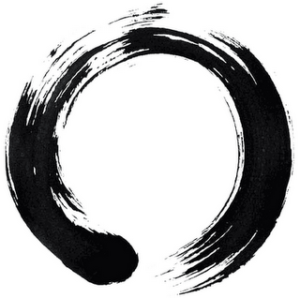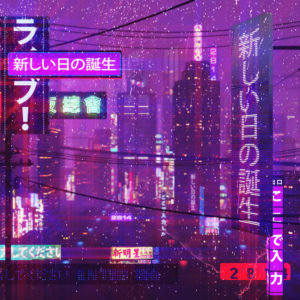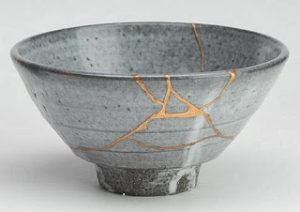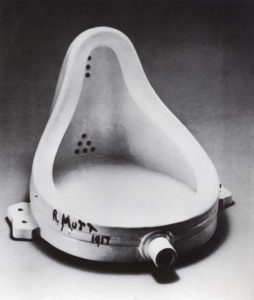Art and Life in the Alchemical Net
Forest Muran
The city of London, Ontario has a surprisingly vibrant community of artists, though perhaps too often unsupported by the kind of critical backbone which might be found in a larger city like Toronto. I am continually surprised by the refreshing, beautiful, and often strange works frequently found in London's local galleries, such as its Forest City Gallery, TAP, and DNA, as well as the galleries found on the Western University campus, McIntosh Gallery and the Labatt Visual Arts Centre. Within the past year, I've seen many exhibitions, and have often thought about compiling the thoughts they have inspired into a single critical essay. This year, three exhibitions in particular caught my attention: Carpathian-Andean Alloy at Forest City Gallery, Anti-Profit: Independent Publishing in London at McIntosh Gallery, and what we might become at the Labbat Visual Arts Centre. It is my intention to prop up net near these three exhibitions, and catch what meanings and ideas I can extract from them. I hope to open a space for exploring their ideas, and, with the help of some external sources, to contend with, fracture, and develop them.
Too often criticism is seen as a cold, destructive act. It's seen as something judicial, rather than an essential part of the creative ecosystem. The reason for this is a misunderstanding of what criticism actually is, and how it relates to the creation of art. In most cases, art is a social act. It can indeed be theraputic, and even personally transformative, but if you are displaying your work in a gallery, it is without doubt a social act. In this age of entertainment, our perspective toward art is completely backward. It is often the case that we see the burden placed on the art itself, with the object being tasked with entertaining us, or with transforming us in some way. But in reality, we are all art critics, and our measure of enjoyment, elucidation, enlightenment from art comes entirely from our own capacity to engage with it.. Rather than being something cold and destructive, art criticism, beyond its popular form iconized in Roger Ebert's thumb, is meant to add meaning, to extend, to grow. Whether the critic intends to reveal the meaning inherent in the work itself, or to extend an entire universe of thought from a grain of sand (the distinction between the two is not so obvious), at its best, art criticism enriches, points out new connections, and transforms thought. It develops new ways of understanding. It is a creative act in itself.
That said, I hope that my exploration of the works of these London creatives will, at the very least, add something to a larger conversation about these works. This act of casting a net and allowing the condenscation of new ideas to trickle down, is indeed a creative act on its own, but also contains its own risks. Instead of approaching these works from a place of paranoia, anxious to assign meaning to various boxes, containing defined meanings in carefully organized conceptual containers, I hope instead to act as a light that allows even the smallest specks of significance in these works to become apparent, and for their iconnections to the larger world of ideas to become clear. I am approaching these articles as an artist, sampling the art and ideas of others in order to create a larger collage of creative potential.
Carpathian-Andean Alloy
Forest City Gallery
March 1st, 2019
Artist: Barbara Hobot
Why do we create art? It's an excellent question, and possibly a frightening one, especially for artists. Certainly, motivations vary as much as the artists who hold them. Also certain is that most of us are not quite clear on what are motivations are. It isn't a question that is often asked, which is exactly the kind of question that we should be most concerned with. Stock, spontaneous responses like “it's interesting,” or “it's fun,” or “it's the only thing I can do,” all belie a vast, tangled system of desires that exist just beneath the surface of the artist's mind, the kind of tangled system that perhaps can only be unravelled through art itself, through the language of myth and symbol.
Hobot, an Ontario artist and sculptor who currently lives in Kitchener, but who had once studied art in London, explores in multiple layers a subject which can provide insight into this realm of the hidden mind. Carpathian-Andean Alloy is an exhibition of fundamentally alchemical works. It is clear that much research went into the creation of these works, and Hobot's exhibition, through many different doors, gives us a glimpses into the system of this alchemical language.
Iron and Copper Ensnared on Steel depicts a photo of Joachim Wtewael's painting Mars and Venus Surprised by Vulcan printed on a sheet of stainless steel. Stainless steel is, of course, an alloy itself, and is representative of the aim of alchemy: The combination of base elements to bring about transformation. Though alchemy was in one sense a precursor to modern-day chemistry, dealing with the transformation of physical states, in another sense it deals metaphorically with the development of understanding in the mind and spirit, an angle investigated at length by Carl Jung. In alchemy, Jung observed a parellel with the types of symbols which were occuring in the dreams of his patients undergoing psychological transformation (individuation).
The myth described by Wtewael's painting is also said to represent the fundamental aim of alchemy. The story centres on an adulterous affairbetween the beautiful classical goddess venus, and the virile, handsome god Mars, occuring behind the back of the ugly god of metalworking, Vulcan. After become aware of this secret relationship, Vulcan decided constructed a fine net out of bronze, which he then used to trap the furtive lovers and prove their dishonesty. In alchemical texts, iron is associated with Mars, while copper is associated with Venus, with Vulcan often being associated with fire. Sir Isaac Newton, whose interests included not only physics, but alchemy as well, held the belief that alchemical secrets were hidden within the system of classical mythology. With such an idea in mind, he used the myth of the Vulcan's net to form an alchemical recipe. Vulcan is regarded as the prototypical alchemist, being the god of metalwork and forging, and in this particular myth employs his alchemical knowledge by metaphorically forming an alloy between Mars and Venus – that is, iron and Copper. By printing this particular painting on the alloy of stainless steel, Hobot is further perpetuating the tradition of the classical myth. She is repeating the ensnarement of the furtive lovers, this time with Vulcan, too, being caught in his own trap.
Of course, this act of ensnaring is not particular to betrayed husbands alone. Artists also ensnare, and they ensnare whenever they put paint on a canvas, or shape any worn-down, functionless objects into something new. Delueze and Guattari write, “the artist is the master of objects; he puts before us shattered, broken-down objects, converting them to the regime of desiring-machines.”i In other words, the artist converts the familiar and everyday into objects with renewed potentials, featuring entirely new possibilities. This is an alchemical transformation, as any act of recording must necessarily be. The “master of objects” cannot put objects before us without transforming them in some way, without leaving their own trace. When talking about dreams, Alexandro Jodorowsky describes how “we do not see the complete dream, but the parts that we have selected depending on our level of consciousness. We reduce it to fit within the limitations of the individual 'I'.”ii The same observation applies to observations in life, as well as observations in art. What is ensnared, what is recorded, in our creation is limited by our own perspective. While it is possible that the act of capturing experience can lead to something new, a transformation in our understanding, the danger always exists that we will only end up ensnaring ourselves, trapping our minds withing a repetition compulsion of our desires, fears, and follies – the tragic state of the successful artist who now explores the same old cliches in the name of profit alone, and has forgotten how to create, how to follow unexpected paths toward increased self-understanding.
Hobot's exhibition does not dwell only the mythological side of alchemy. In Pacific Ocean Copper Mining Protester, Hobot features a video recording of a fog-catching net used in Peña Blanca, Chile. The fog-catching net is a piece of technology used to collect moisture from the fog, to provide a much-needed water source after other sources had been damaged by factors such nearby copper mining. In the exhibit's program, Hobot states, “these nets have drastically altered the environment in which they stand. What was once a mountain facing serious desertification is now an ecosystem with thriving plants.”iii Hobot describes an alchemical process, an empirical realization of Newton's net, in a roundabout way.
Hobot's exhibit draws attention to the existence of two kinds of alchemy, or indeed two ways of interacting with the world. There is the method of creating in order to control, and there is the method of creating in order to understand. The distinction is pointed out in R.H. Blyth's valuable early volumes on Japanese haiku in English, where he dexcribes what he sees as the main difference between traditions of magic and traditions of true religion: The first tries to provide a method for changing the world to fit our desires, while the second tries to provide a method to help make do with what is already here.iv Science and technology likewise at different times adopt these two faces. On the one hand, we can operate under the assumption that we can shape the world to our every whim, so long as we have the right tools. On the other hand, we can use our tools not to shape the world, but to cope with the world, to collaborate with it and acknowledge the inherent lack of power we actually have. The first approach is highlightened in the myth of Vulcan and Venus. Knowing his wife to be unfaithful, Vulcan employs a net to capture her – to control her. A wife, however, even a wife who is a goddess, is not a videogame character, and is thus subject to all the lusts, passions, and follies of any being. As an attempt to control nature, Vulcan's alchemy is doomed for failiure. The jealous husband, thinking he is able to secure his wife's fidelity through iron-fisted will, instead pushes her further away, making her more careful about concealing her infidelity in the future. It is the same principle at work in Aldous Huxley's Brave New World, where a future society built upon technological perfection succeeds in achieving a utopia through the powers of science and logic, but at the expense of driving away anything that resembles human depth and value, forcing kernels of humanity to flee into dark, hidden corners.
The second way of interacting with the world is illustrated in the Taoist-like ingenuity of the fog-catching nets, These nets seem to express the famous wisdom of the Tao Te Ching: “Highest good is like water... it is because it does not contend that it is never at fault.”v The net is used not to control nature, not to impose human desire upon it, but to harness already existing natural forces. The Taoist approach is economicaly sound, encouraging us to live as collaborators with the natural system already in place, rather than attempt to shape it to fit the infinite forms of human desire (“desiring-machines work only when they break down, and by continually breaking down,” write Deleuze and Guattari)vi. The fog-catching net reliquishes control, it disables its own autonomy. The people of Peña Blanca cannot hope to control the fogs, and they are certainly no match for copper mining companies. But through their own version of Vulcan's alchemical net, they still somehow managed to find a solution to their problem of water scarcity. By relinquishing control, we paradoxically gain control. This is the foundational message of the Tao Te Ching, and is the true secret to any successful alchemical endevour.
Carpathian-Andean Alloy is, like all art, a kind of alchemical work itself, that is to say, a kind of dream-production. Although it doesn't face the question directly, this exhibit presents a number of stepping stones which we can use to get closer to the question asked at the beginning of this article: Why do we create art? The answer exists stretched across two poles. On the one side, we create in order to control, in order to play God, in order to catch Venus in the act. On the other side, we create art in order to relinquish control, in order to work in conjunction with the mysterious forces of nature, creativity, and our own psychology - in order to produce something which surprises ourselves and others, tracing new paths toward understanding. Nevertheless, we must be careful with the kinds of nets we cast, and with our intentions for doing so. When casting nets in order to capture something, it's easy to trap our own selves within them.
Anti-Profit: Independent Publishing in London
McIntosh Gallery
September 26th, 2019
Curated by Ruth Skinner
At McIntosh Gallery, PhD Candidite Ruth Skinner put together an exhibition featuring a variety of independently published zines by London artists. The collection is a testament to the vibrancy and creative life that flows through the city, often just below our everyday line of site. Exhibited alongside a related touring exhibit, Publishing Against the Grain, which features inernational independently published literature relating to the art world and art criticism, this collection of zines paints a picture of a London very different from that recorded in the annals of government and big business. These so-called zines (truncated magazines, in name and size), represent a leap forward in the democratization of information. For instance, the first commercial xerographic laser printer was released in 1977, making it relatively easy and inexpensive to print multiple copies of simple booklets. It gave the average person the ability to publish and distribute ideas on a large scale, without needing to appease government or business gatekeepers with pass codes of profit and social capital. Increasingly, more and more megaphones were being placed in the hands of the masses.
As we've seen in the age of the internet, however, giving the masses megaphones can lead to quite a noisy situation. Not doubt, dismantling the barriers to communication is generally a positive thing. But many surprising consequences begin to pop up as we become more accustomed to this ubiquity of information – information pollution, art pollution, lack of quality control, the exacerbation of ideologically isolated communities, etc,. Nevertheless, it's important to see this kind of structural change not as an overall negative or positive change, but simply as an innevitable transformation that has followed technological evolution. What is important is observing what has already happened, what is currently current happening, and what might happen.
Leafing through the zines at Skinner's exhibition, my attention was drawn to the subject matter covered by many of these self-published works. Many of the zines felt incredibly personal. It's interesting to note how, conversely, the world of professional publishing focuses mostly on the mythic. In order to capitalize on the largest audience possible, the publishing industry encourages works which appeal to universal archetypes and broad topics. Commercially viable creative works rarely deal with specific problems or subjects, but instead with maximally relatable abstractions. Independently published zines, however, ideally created not for profit but for the pure proliferation of ideas, have the luxury of being able to address their problems more directly. Many of these zines felt as though they had just moments before been chissled out by their authors, as thought they still retained evidence of fresh life, similar to artifacts found at Pompeii versus the more carefully immortalized busts of classical gods.
Many of the zines featured at Skinner's exhibit dealt with personal problems. I use the word “problem” to refer to painful states of being caused by a lack of understanding – dukkha, in Indian philosophy, or perhaps neuroticism in Freudian terms. I think the comparison is apt, since many of these zines seemed to aim at a transcendence of some kind. Some of the zines were political. Some dealt with issues of identity, beauty, and sense of self. One zine used tarrot imagery to tackle the subject of death. Another still was written as a love letter to the author's own depression. In many cases, these zines, in contrast with many commercial publications, seemed to have been written with the author themself in mind as the primary beneficiary to their creation, as though written in a spirit of self-healing, or self-developing. After the authors, perhaps the immediate friends and family of the authors would be the most interested in engaging with these creations. In other words, within these zines was something very much reminiscent of a diary. As if to drive the point home, I found one zine at the exhibition, written by London artist Megan Arnold, which was literally an illustrated account of her summer experiences, entitled Megan Arnold's Summer of Complete Freedom. Although Arnold's work wore its purpose on its sleeve, there seemed to be something of an element of the diary, the catalogue, in all of the zines present.
People have their own reasons for keeping personal journals. But these reasons typically fall into three catagories: Journals are written to comfort, to record, and to transform. Anne Frank continued to write her diary as a way of providing defined boundaries within her often uncertain life. Matsuo Basho wrote his Oku no Hosomichi as an aestheticized record of his epic travels. Marcus Aurelius wrote his Meditations in an attempt to transform his mind and strengthen his spirit. Nevertheless, as an alchemical act, writing a journal inevitably produces a transformation in the writer's understanding, in the same sense that any act of memory is an act of alchemy. In his autobiography, Jodorowsky describes the function of memory: “The past is not immovable; it is possible to change it, to enrich it, strip it of trouble, give it joy. It is evident that memory has the same quality as dreams. Whenever we remember we recreate, giving a different interpretation to the events remembered.”vii In this sense, to produce a record of something is to interact in a very tangible way with experience, to apply a creative brush to the passage of time. Moreover, in as much as an art-work is a kind of dream-work, it is through these creative records that we interact most intimately with life. Discussing Lacan's theory of dreams, Slavoj Žižek related how “the only point at which we approach this kernel of the Real is indeed the dream ... it was only in the dream that we approached the fantasy-framework which determines our activity, our mode of acting in reality itself.”viii That is to say, in everyday life we are blind to the murky forces which guide motivations and beliefs, but in the dream-space we come to see in a disguised form the true face behind our real-world fantasy constructions. Seen from this perspective, the dream-work, as well as the art-work, reveals itself as an indespensable means for expanding our understanding of aspects of reality we are usually blind to. The dream-work helps lift the lid covering hidden aspects of reality, allowing the usually unseen content to leak out into our everday perception.
Herein lies the value of keeping a record, or of creating a zine – as a creative interaction with life experience, it allows us a space to explore the abstract forces of imagination, myth and mind. Records allow us a tool through which we can channel our own inherent wisdom to better our understanding of ourselves and our world. After all, a teacher does not teach, but merely shows the student the path toward wisdom. Innevitably, the student must become their own teacher, something Marcus knew when beginning his Meditations. It was only by entering into the dream-space of the diary that the Roman Emperor was able to percieve his own weak points, fantasy-frameworks, and follies, which shut him out from further personal development. It is in this sense that Marcus, as well as zine creaters across London, grappled with the residue of their own experience, and carved out their own path in their creative works toward a resolution of their problems.
A diary is also a kind of net. It is a net thrown over jittering memories, impressions, and experiences, in an attempt to provide some kind of boundary. That said, there is a danger in trying to imprison our experiences. Basho took artistic liscence in creating his Oku no Hosomichi, taking five years to finish writing and editing the work. Many details in this famous haibun contradict those found in a more matter-of-fact account found in a diary written by Basho's travel companion Sora. That said, Basho's artistic liscence does not seem to have been taken in an attempt to tyranize that past, but moreso as a way to beautify it, to bring out the best in what already there, much like the fog-catching nets of Peña Blanca. This indeed is the major function of the haiku form, to pull the ego from the from, and allow experience to shine in its own, essential light. The poet Kyoshi Yakahama once remarked that “the haiku poet looks at moments of life with detatchment, like they are observing a flower.” Just as one cannot force a flower to grow by pulling at its stem, one cannot produce art by forcing experiences into place with a net. This attitude of allowing experience itself to shine through, without attatchment, is so strong in the haiku tradition that it prompted the celebrated modern haiku poet Hakyou Ishida to say that, in fact, “haiku is not literature. It is life in its most raw form. Composing haiku is synonymous with living life.”ix
The relationship of written haiku to our experience of reality is echoed in Lacan's idea of the kernel of the Real being contained within the dream. In living life, we are confronted with a vast, incomprehensible array of experiences and systems, the magnitude of which is too overwhelming for us to make sense of. This is the Vishvarupa of the Bahagavad Gita, the schizophrenic machine of Deleuze and Guittari, Aldous Huxley's LSD vision of the Mysterium Tremendumx. As a defense, the fantasy-framework is absolutely necessary. It is a practical tool through which the ego is given a means to participate within a larger reality, allowing it to organize this reality according to immediate human needs. With this in mind, we can see how haiku is not, in fact, unmasked reality itself shining forth in pure light (as such would be a manifestation of the unbearable Mysterium Tremendum), but is rather a kind of dream-vision of reality which all the same contains a kernel of this tremendous sense of the Real, allowing a practical space in which to contend with its ambiguous residue. It is a mistake to try and cast a net over this overwhelming infinity. But where the haiku masters have succeeded is in allowing the vast essence of the old ponds and the jumping frogs to be caught on a net, and to trickle down from the drifting fog of pure experience into the fertile ground of our imaginations.
The important question then is, do we create in order to control, or to understand? Like in R.H. Blyth's dichotomy between magic and religion, some approach art as a dark art of realizing desires, a way of forcing the world to comply to our fantasies. This is the creative world of the Marquis de Sade, who creates ellaborate and implausible social systems for the sake of molding reality to fit his nightmareish fantasies. In stark opposition to the work of the Marquis, haiku forces the ego to take a step back and allow the dream-world itself to emerge organically. A good haiku poet never forces meaning, and never forces reality to be a certain way, but merely provides a net on which to catch impressions, allowing them to gently seep into our understanding.
The zines featured at Skinner's exhibition indeed seemed to naturally gravitate more toward what Blyth would call the “religious” method, choosing to approach creation in a spirit of exploration and uncertainty. But of course, any self-publishing boom will produce its share of Marquis (let's not forget that the Marquis is among the self-publishing pioneers), who will take any opportunity for creative expression as a chance to imprison reality, to force it to dance to their own songs. Such is the state of many of the more politically minded zines, which often make frustrated attempts at casting an ideological net around the uncontainable mass of experience, acting as gods of their own theoretical worlds. In my mind, this type of creation is the entity closest to deserving of the title “bad art.” But even then, with a sharp enough critical eye, and a broad enough imagination, even the most tyranical works of art can yeild vibrant readings. Luckily, the majority of zine creators featured in this exhibit seemed to understand that the best diaries are those which record reality not in an attempt to change it, but as an open invitation toward growth and understanding. This ability to open a space for dreams free from the worldly tyrannies of profit, social capital, and ego fantasy, is possibly one the zine's most endearing qualities.
what we might become
John Labatt Visual Arts Centre
October 3rd, 2019
Artists:
Matt W. Brown
Jerome Conquy
Yas Nikpour Koshgrudi
George Kubresli
Ramolen Laruan
This exhibition of art and sculpture created by students in Western's MFA program dealt with our relationship with the future. The exhibition's title alone gives us reason to pause and think: Why should we be concerned with our future? What value comes from it? In exploring memories, prophesies, and the process of transformation, this exhibition provided an opportunity to examine questions about the future, our relationship with our current age, and the technology that we use in an attempt to shape both.
Does it matter what we will become? For Heidegger, who argued that us conscious beings are fundamentally concerned with time, we indeed would not have a sense of being without it. For him, to be concerned with “what we will become” is an essential characteristic of the kinds of beings we are, and is indeed inseperable from us. We can only be what we essentially are through our relationship with time.xi Buddhist philosophy takes a different approach, seeing time as a fantasy-framework for providing a workable structure to Huxley's Mysterium Tremendum - for making sense out of the incomprehensible essence of existence. In the Pheṇapiṇḍūpama Sutta, for example, we can find a passage which compares time to a ball of foam: “What substance could there be in a ball of foam? In the same way, whatever appearance there may be – whether in the past , present, or future ... you should look at it, reflect on it, and carefully examine it. Looked at in such a manner, it will appear as empty, hollow, and insubstantial.”xii In Buddhist thought, what we will become is seen as something illusory, a fabrication based on our present position. What is actually of importance is our awareness that whatever the future brings, it will bring change. These two approaches to the question of our relationship with time are not as different as they may first appear. Heidegger is of course preoccupied with the phenomenal world, the world that can be immediately experienced and interacted with. For him, although time is an essential element by which we understand reality, there is not necessarily any deeper reality behind it. Both Heidegger and the Buddha suggested that, for us beings concerned with our relationship with time, there isn't any any existence of time beyond our experience of it. Our conception of the future is insubstantial and, much like our memories, is a dream-like fantasy-framework that we adopt to enable us to create a useful conception of our present.
The first work encountered when entering this exhibition was Ramolen Larun's hole in my pocket. The work consists of a number of pieces of denim stitched together, creating a long, flowing line of blue extending vertically from the ceiling to the ground. In many ways, this work resembles a denim waterfall. Contained in this waterfall are various other types of fabrics, as well as fragmented, faded photographs and different lines of text stitched into the original bluejeans used to make the work. In his popular western collection of Zen Buddhist teachings, Shunryu Suzuki explains the significance of the metaphor of the waterfall. He describes the process of water first falling from the rocks, and then becoming deattatched from the original stream, as being comparable to our own state in the world – as Heidegger would put it, our “throwness.”. Although our source may all come from the same stream, “after we are seperated by birth from this oneness, as the water falling from the waterfall is seperated by the wind and rocks, then we have feeling ... whether it is seperate drops or not, water is water. Our life and death are the same thing.”xiii Suzuki seems to be channeling Heidegger, and his metaphor is perfectly suited to describing Heidegger's notion of time as related to us human beings. Whatever is in the waterfall – in the case Laruan's piece, the text, memories, and materials that comprise it – is what we take concern with, from beginning to end. Although we are only ever present at one point along the waterfall's steep course, the boundaries of the waterfall are determined, and it is within the boundaries of the waterfall, our earthly lifespans, that we are able to relate to our being. Although Laruan's hole in my pocket seems to focus on the past, our memories, and our associations, it also provides an apt visual metaphor for the space in which the question posed by the title of the exhibit can be asked: We can only know “what we will become” in terms of this defined space. Even then, we know that whatever we do become will be as fragmented, flowing, and unstable as the rippling drops we find ourselves as now.
The series of watercolour paintings by George Kubresli in this exhibit further reflects this fragmented conception of being. Depicting family members through vibrant, pointlistic brush strokes, Kubresli suggests a vision of the human being as a fragmented entity, our liquid identities constantly bubbling, popping, and dripping every which way. Kubresli's vision depicts human beings as maleable creatures who are relentlessly being shaped by the forces of chance, always in a state of flux. It is a vision of powerlessness in the face of insubstantiality. As much as we might like to think of ourself as having a singular, stable self, with a single change of brush stroke direction, our identity can completely change.
Substantial or not, human beings are nevertheless unmistakably concerned with tomorow. This is clear in how interested we are in the process of transformation. The entire frameworks of education, business, and law are built upon the idea of the transformation of self through technology, in a highly alchemical sense. Education is word alchemy, business is profit alchemy, law is punitive alchemy, etc,. One is in turn transformed into an educated person, a wealthy person, and a prisoner, respectively. Even in narratives, we gravitate toward stories involving personal development and significant change. A lot of the reason we are concerned with the future is because we are afraid of it. In this exhibition, Jerome Conquy's Hollowgram, for example, depicts a hollogram of a Medussa-like being with a head tangled in a mess of wires. Conguy's techno-Medussa is a kind of paranoid being, a technological neurotic, so desperate to attain control over the elements that it has merged with its own tools. The techno-Medussa is afraid that time will not be faithful to its desires, to its continual well-being, and so attempts to seize it with force. It is essentially the tragic cyborg of science fiction, a being so desperate to control its fate that it becomes ensnared by its own tools in the process. It is a figure who represents the state of a Brave New World utopia that, through technology, has “gained the whole world, but lost its own soul”.
Technology is essentially represented by Vulcan's net, which was crafted as part of a plot to aquire control over Venus, his wife. But naturally, much like the unfaithful lover in the myth, we cannot hope to control the future. Vulcan cannot control Venus. A wife is not a videogame character, an avatar in the Sims that can be directed by the click of a mouse. As an infinitely complicated, unpredictable subject, Venus must be encouraged, collaborated with, understood, in order for a relationship to exist. In this same sense, when approached with the attitude of a paranoid lover, the future will never be faithful to us. We will only ever succeed in pushing it further away, enticing it to grow increasingly insidious, cold, and emotionally distant.
A large video projection in the exhibit, created by Yas Khoshgrudi and entitled The Lost Autonomy, deals more directly with the theme of seizing control. The piece contains three projections as well as a video being displayed through an iPad on a pedestal. Taking inspiration from the series of simulation games The Sims, Koshgrudi depicts herself in the videos as a kind of video game avatar, with a crystaline icon floating above her head like a selection cursor. Projected on the ground is an icon reading “DISABLE AUTONOMY,” an option present in The Sims series of games for disallowing the simulated characters from making choices without first recieving the player's consent. The possibility of such an action in the game raises the intruiging question of the relationship between the player and the avatar. To what extent do we identify with the character we control in a videogame? To what extent are we even able to say we have control the control in the videogame? After all, the role of the developers of a videogame is to give us a satisfying illusion of control. It is important to remember that in a videogame, the limitations always outweight the potential freedoms. In the original Super Mario Bros., for the NES system, for example, you are given the fundamental abilities of moving from left to right, and being able to jump. Our familiarity with these basic abilities blind us to all the prohibitions that are also in place in the game – the player cannot fly, the player cannot run into enemies, the player cannot break down barriers, the player cannot do a backflip, etc,. Of course many of these limitations are put in place to increase enjoyment in the game. Without limitations, there is no sense of drama and accomplishment. As such, to a certain extent, the player of a game must accept a certain degree of lost autonomy – these are the controling factors put in place by the game's rules, supposedly to increase the pleasure of playing it. The same is of course true in everyday life, though perhaps on a scale we are often unable to see clearly. While there are many choices we can make to better our lives and those of others, the vast majority of the rules have already been set. To some degree we must accept the lack of control we have when confronting our futures.
While we may think we are in control of ourselves, often we are not. Freud of course speaks of his famous formulation of the unconscious, the seat of contradictory impulses which pull us constantly between the gratification of desires and our need to conform to the necessities of reality. Lacan speaks of his notion of the big Other, our deep awareness of social norms which we feel watch over us even in our most intimate, and autonymous, moments. In the well-known Buddhist Anattalakkhaṇa Sutta, a graceful system is put forth for thinking about our lack of autonomy: “The body does not constitute a self. If the body constituted a self ... it would be possible to manipulate the body by making determinations such as Let my body be this way, let my body not be that way. So, because the body does not constitute a self, it does give us trouble.” The Buddha then goes on to repeat the formulation in the realm of feeling, perception, conceptual fabrications, and cognizance, ultimately arriving at the conclusion that “whatever body there is, whether past, present, future ... every body should be seen with thorough understanding for what it is: This is not mine, I am not this, this is not my self.”xiv The Buddha points out the videogame-like characteristics of our experience. He points to how we are unable to control our bodies as we would like to (falling sick at inconvenient times, dying at inconvenient times), and that we are unable to control our minds as we would like (unable to cause the mind to become peaceful at will, unable to stop ourselves from being hopelessly led by our desires). Buddhist philosophy, much like psychoanalytical thought, sees the human body as someting that has, at a fundamental level, had it's autonomy disabled. Laruan's denim works, for example, present something we often associate with the human body in truncated, elongated, uncertain forms. These works suggest a certain ambiguity of identity. If we are all Super Mario in our own videogames, then Laruan's deconstructed denim works represent Mario as his Vishvarupa, his Universal Form - one cannot tell where the avatar's overalls begin, and where our own overalls end. We are like the videogame avatar, our every movement being directed by a jewel-like cursor, leading us from one desire to the next, one temporary satisfaction to the next. In fact, it is within the world of the videogame that we feel most free, since we are able to release ourselves from the psychologically confining net of our own ego, and by doing so find some freedom in manipulate the movements of another body, released from our own worldly inhibitions. This is the same type of freedom Kurt Vonnegut explores in his short story Undready to Wear, in which a method had been discovered for leaving one's own body, with the possibility of possessing another. The question then arises, however – what right do we have to disable the autonomy of another body, in the quest for our own, personal autonomy? Would such a replacement even solve the original problem, or does it only transfer old worries onto a new avatar?
While Khoshgrudi's video installation might point toward the element of “magic” mentioned in R.H. Blyth's distinction between magic and religion, the artist Matt W. Brown takes a much more organic, or “religious” approach. In Blyth's observation, magic is that which seeks to control reality (Vulcan's net, the techno-Medussa, the tyranical imagination of the Marquis de Sade), whereas religion is that which seeks to make reality endurable (the fog-nets in Peña Blanca, haiku, the Buddhist principle of anatta, or non-self). In this sense, what gives up control, what collaborates with the mysterious forces of nature, is what is religious. This is spiritual life as concieved by the Tao Te Ching, which states: “Do that which consists in taking no action, and order will prevail.”xv Does this description not perfectly match the process of the of fog-catching nets found in Barbara Hobot's Pacific Ocean Copper Mining Protester? These nets, instead of seeking to ensnare its object, as does Vulcan's net, instead take the position of non-action, thereby drawing the water towards itself in the form of the fog's condensation. By doing nothing, the fog catching nets accomplish more than the entire village could accomplish through action.
Echoing this principle of non-action, the works of Matt W. Brown's on display at this exhibit follow the method of the fog-catching nets and, like in the case of haiku, allow nature to radiate in a space cleared of active ego influence. In his Flatland series, as well as a number of other acrylic gouache works featured at the exhibit, Brown explored a technique involving the gradual evaporation of water-based paint over a long period of time. Like the haiku poet, Brown's involvement in the creation of his art was as an initializer of conditions, choosing colours as well as water state changes. Brown set up the range of conditions for experience, and then allowed natural chance processes to take control for the rest of the process, playing more the role of an experimental currator than a directly active artist, giving the the forces of nature room to breath themselves onto the canvas. Of course, whenever such a recording is made of natural experience, there is some manner of distortion, or human mark. In this way, Brown, like Basho, is not reproducing nature, but is instead producing a kind of vivid dream which reveal the true nature of reality far more clearly than reality could itself.
One of Brown's works made in collaboration with natural forces, entitled Big Drop, appears as an immediate extention of Shunryu Suzuki's metaphor of the waterfall. Big Drop, named after a famous white water rapid, is comprised of a blue wall of paint, with multiple lines of lighter blue paint trickling down its surface. It is a perfect companion piece to Laruan's hole in my pocket. Despite, on the surface, being the more abstract work, Big Drop captures the metaphor of the waterfall in a much more literal way, depicting the invidiual drops as they progress across the closed temporal unit of the canvas. The Big Drop in referenced by the painting is of course ourselves, thrown into the world, briefly gaining some measure of autonomy as we begin our descent, before ultimately being plunged back into the unified absolute from which we came. The length of the waterfall is of course Heidegger's notion of time in its relation to Dasein's being. Of course, no matter how vast you spread your net, catching youself will always be impossible. Whatever we might become in the future, it is clear that we will fall through the nets we have constructed, and will one day meet with our dissolution at the end. Brown's painting draws our attention to this surrendering of autonomy which is essential to our being thrown into the world, our continual descent within closed borders. Autonomy always exists within a confined system, framed by its own disabling.
Big Drop is also unmistakenly the same as the drops produced by the fog-catching nets. By allowing the inherent power of the fog to present its moisture as a gift, the fog-catching nets are able to produce something of value through the principle of non-action. The painting known as Big Drop likewise produces its value as the result of nature working its forces on a passive canvas. Brown's works in this exhibition share a very similar ethos with the works of haiku masters like Basho, Issa, and Buson. They play more the role of experiential currator than directly involved artist, allowing the forces of nature to manifest themselves on the page. Of course, whenever such a recording is made of natural experience, there is some manner of distortion, or human mark, on nature. In this way, Brown, as well as Basho, are not reproducing nature, but are instead producing a very vivid dream which reveal the true nature of reality far more clearly than reality could itself. Like the fog-catching nets, Brown's art doesn't just catch the passive movements of its material. In some manner, it also captures a dream-vision of the mysterious residue of ungraspable reality.
In exploring these works on display in the gallery exhibition, have we come any closer to an idea of “what we might become?” The exhibition appeared to concern itself more with potential than prediction. As every science fiction fan knows, the heart of the genre is not found in playing Nostradamus, but in playing H.G. Welles – that is to say, not predicting the future, but in coming to understand the present by means of the kernel of truth contained in our dream-vision of future. Like a reversed version of Marcus Aurelius's Meditations, Welles's The Time Machine provides its own meditation on current issues of social and class structure through keeping a record of supposed future events. Naturally, because Welles pressumably did not have access to memories recieved from the future, he was forced to construct them using his imagination. Memories of the past, however, aren't as distinct from future imaginings as we may think. Both acts are undertaken specifically for the purpose of developing an understanding of the present. Jodorowsky's process of dream shaping can apply just as much to that which is remembered as to that which is predicted. After all, both the past and present are nebulous dreams which can lead us on a path of gaining a deeper understanding of ourselves as we currently are. In this way, what we might become meditates on the core aspects of what we are, and our many potentialities. It focuses on human beings as technological neurotics, as entities within a videogame, as amorphous identities, and as spiritual beings who possess the possibility of entering into a harmony with their surroundings. In the end, what we will become will not be so different from what we are. After all, what was water will in the end remain water. Raising these kinds of questions, what we might become flourishes as a collection of artifacts which encourage us to reach from the future into our own present.
Final Thoughts:
Let's return to our original question: Why do we create? Our first answer layed out two extremes. On the one hand, we create in order to imprint our desires on the world. On the other hand, we create in order to better understand the world. Each of these three art exhibitions we've discussed have provided us with an illustration of the two paths. That said, I will not try and pretend there is anything unique about these exhibitions – indeed, the two possible paths of creation are engraved within any creative act. Nevertheless, these exhibitions were fortunately remarkable enough, and dwelt deeply enough in their symbolic language, to allow us for a sharper image.
In Ant-Profit, for example, we saw how art is used as a means of grappling with psychological, sociological, and spiritual problems, as a kind of transformation of our level of understanding through recording elements from our past – that is to say, enlightenment regarding our relationship with reality through the act of recording. Conversely, in the what we might become exhibit, we zoomed in on the anxiety that underlies our desire to control the future through technology, while being granted a vision of a potential way out of this existential trap. Our investigation into these exhibitions has helped us to percieve the threads of Vulcan's net more clearly, and has hopefully helped us develop a better understanding of the two ways of using the net – to capture the object we seek, or to use it to encourage the object to come to us.
To write a diary is to use the past in order to understand the present, while to write science fiction is to use the future in order to understand the present. In the moment that we recollect and record, we are, in effect, shaping our current mind, extending from it new meanings and new perspectives. It is important to recognize the fundamental difference between the strategies behind Vulcan's net and the fog-catching net. At first glance, it may seem that they have a similar aim, to change some aspect of reality. Vulcan is upset with his adulterous lover, and wishes to control Venus. The villagers of Peña Blanca want to reintroduce water into their natural environment. But while tyranical control might occasionally give the appearance of being effective (the wife cleans and stays at home all day, the kids do their homework and don't talk back, etc,), these types of systems are nevertheless inherently unstable, and apart from being a great strain for everyone involved, eventually collapse under their own straining weight.
To continue with the metaphor of the iron-fisted patriarch, let's look at an example used by Karl Marx. In his Das Kapital Marx uses a rather interesting example to describe an instance of “labour in common or directly associated labour”xvi - that is, a social structure in which labour conditions are equally divided amongst individuals according to their abilities. Marx uses the example of a patriarchal peasant family, whose industry is governed by a central father figure who directs his family members toward their distributed tasks on a farm. Contained within this particular example, however, are the seeds of the tyranical element found in many patriarchical governments build upon Marx's principles, where shared labour is brutally encforced by a central father figure. Of course, such patriarchal family industries are not necessarily tyranical, just as not everyone who picks up a pen will writes Justine. There are fathers like Basho, and there have been emperors who lead by wisdom and example. There are monarchs who, instead of trying ensnare their subjects within a net, instead allow for a natural arising of collective effort. Again, this is the fundamental principle of the Tao Te Ching, which was written as a book of spiritual wisdom just as much as a practical guide to governance. The Tao Te Ching states: “And if I cease to desire and remain still / The empire will be at peace of its own accord.”xvii By allowing the object to come to us, rather than greedily clutching for it, we can establish a more solid foundation for our lives and for our governments. Conversely, as any fan of Shakespeare is well aware, ruling through desire, active effort, and paranoia will often lead to tyranny, treachery, and tragedy. It is an easy way out, a consequence of an improper understanding of how the world works.
The ultimate tragedy is that, as a result of trying too hard, we often fail. Likewise, art is not something that you whip into place. The “master of objects” is not a drill sergeant who blows his whistle, ordering the objects of experience to amalgamate. Rather, in the creation of art, our role is to prop up a net, and allow the dreams and understanding to come to us. A haiku is not a guidebook to an aesthetic experience, but is rather a landmark we can use to find the experience ourself. As with a good teacher, good art does not tells us the answers, but merely provides a stepping stone to help us discover them ourselves. As such, we are all alchemists in our own may, drawing together eleemnts here and there, always in the search of transcendence over our current state of understanding. Only, the wise alchemist knows that the true aim of the alchemical work is not to find the philosopher's stone and thereby attain eternal life, but to come to the realization that there was never any need for the philsopher's stone to begin with.
iGilles Deleuze and Fé lix Guattari, Anti-Oedipus: Capitalism and Schizophrenia, trans. Robert Hurley, Mark Seem, and Helen R. Lane (New York: Penguin, 2009), 32. Print.
ii Alejandro Jodorowsky, The Dance of Reality: A Psychomagical Autobiography, trans. Ariel Godwin (Rochester: Parker Street Press, 2014), 233. Print.
iii 6. Barbara Hobot: Carpathian-Andean Alloy (London: Forest City Gallery, 2019) Exhibition Brochure.
iv R. H. Blyth, Haiku (Tokyo: Hokuseido Press, 1981). Print.
v Lao Tzu, Tao Te Ching, trans. D.C. Lau (New York: Penguin, 1963), 12. Print.
vi Deleuze and Guattari, Anti-Oedipus, 8.
vii Jodorowsky, The Dance of Reality, 232.
viii Slavoj Žižek, The Sublime Object of Ideology (London: Verso, 2008), 48. Print.
ix Makoto Ueda, Modern Japanese Haiku: An Anthology (Toronto: University of Toronto Press, 1976). Print.
x Aldous Huxley, The Doors of Perception (New York: Harper & Brothers, 1954), 55. Print.
xi Martin Heidegger, Being and Time, trans. John Macquarrie with Edward Robinson (New York: Harper & Row, 1962). Print.
xii Glenn Wallis (trans.), Basic Teachings of the Buddha (New York: Modern Library, 2007), 28. Print.
xiii Shunryu Suzuki, Zen Mind, Beginner's Mind, ed. Trudy Dixon (New York: Weatherhill, 1970), 94. Print.
xiv Wallis, Basic Teachings of the Buddha, 31.
xv Lao Tzu, Tao Te Ching, 7.
xvii Lao Tzu, Tao Te Ching, 42.
